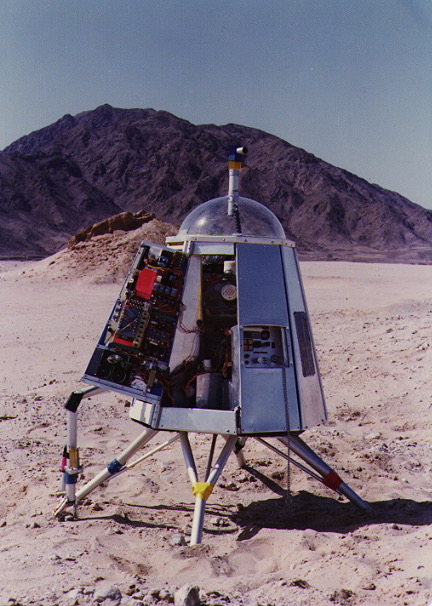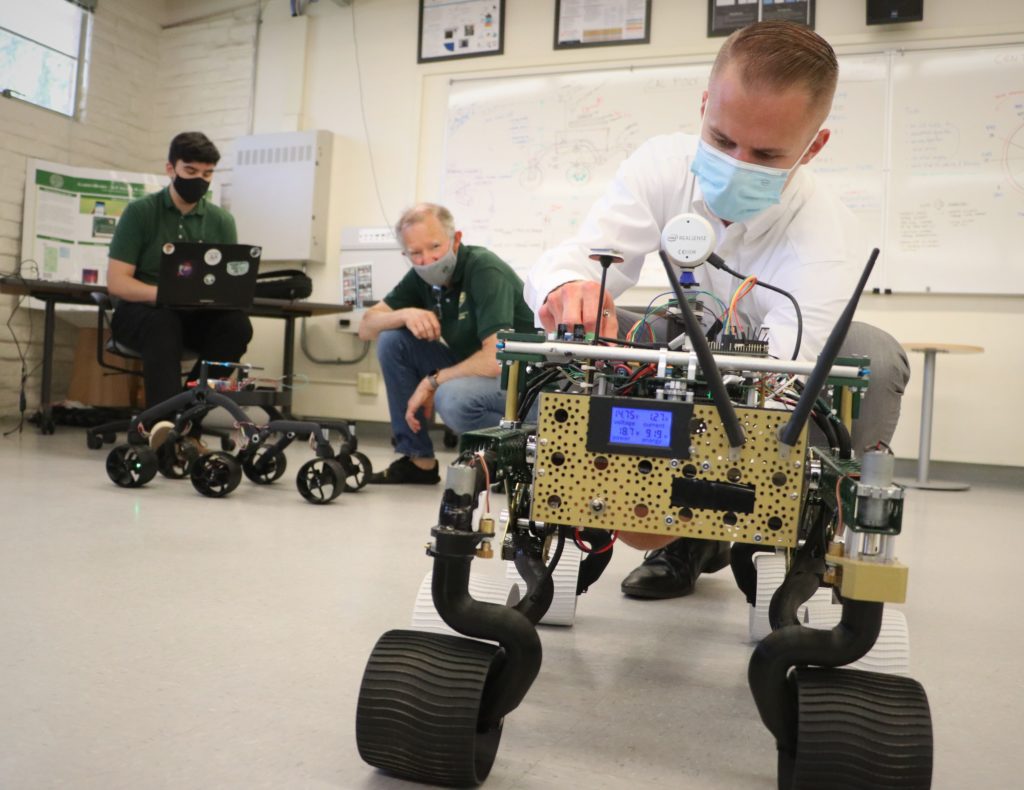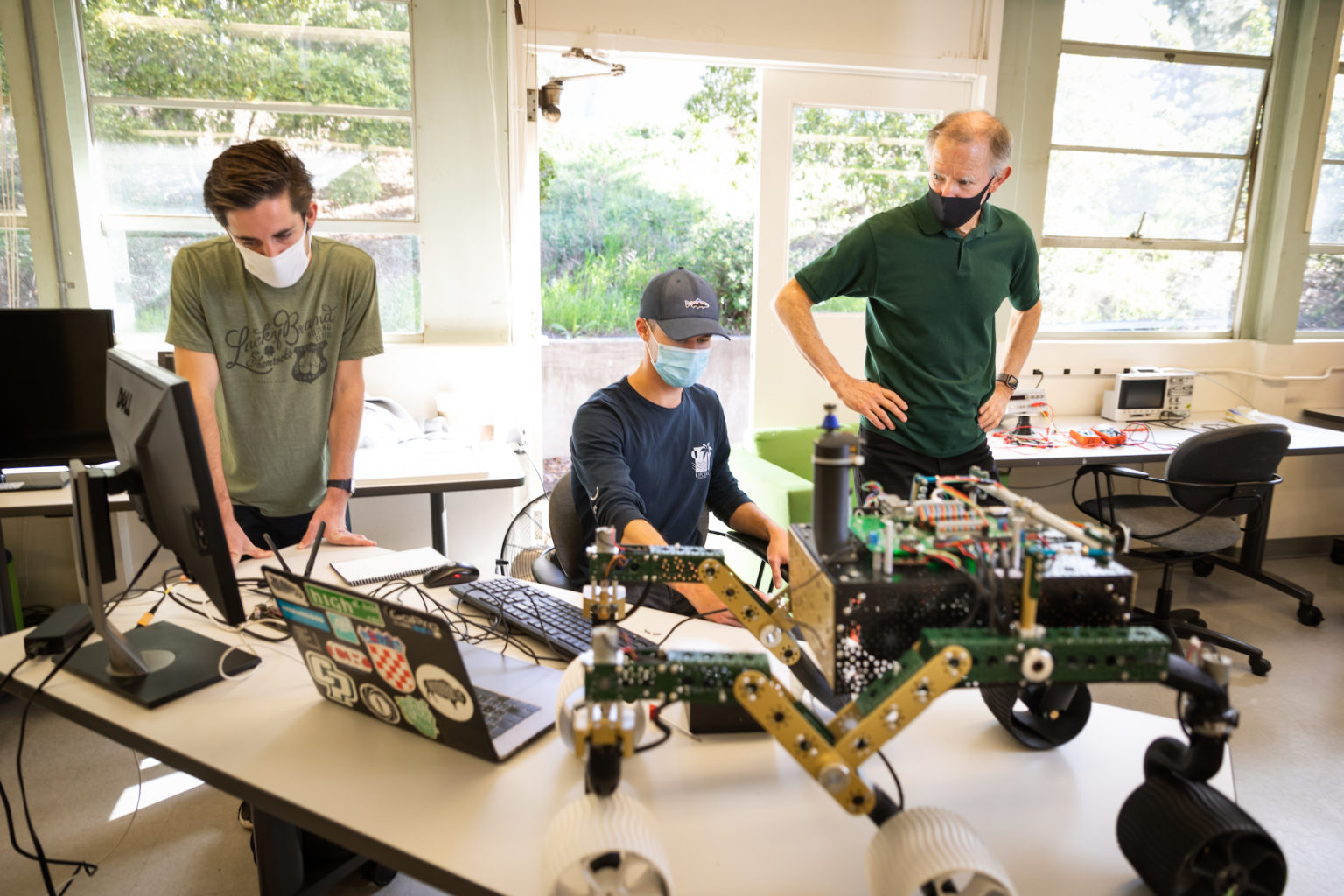A young toy rocket enthusiast at the time, 11-year-old Rich Murray watched Neil Armstrong plant his foot onto the moon in 1969 and envisioned his own future.
“I was kind of a nerdy kid,” Murray said. “I wanted to build that moon lander that Neil stepped off of.”
While a 17-year-old Murray would build an award-winning Mars lander six years later, the “Whiz Kid’s” career would take a different path when he launched a successful graphics printer business two years after his Cal Poly graduation. However, more than 200 patents, inventions and trademarks later, Murray’s affinity for space has resurfaced at Cal Poly, where the electrical engineering lecturer has been working with students on a rover he hopes will eventually make it to Mars.
“We’re going beyond educational curiosity,” he said. “We want to take this and do something with it.”
Growing up in Southern California, Murray was influenced, like so many other youth, by the Apollo 11 moon landing. In high school, he was further enthralled by NASA’s Viking program, which built space probes that landed on Mars and orbited the planet in 1976.

At 17, his robot, nicknamed SPAR, won local and international awards.
“Essentially, it is just a robot for exploring other planets,” Murray told the San Diego Union in 1975. “It’s something like the experiment package that will be landed on Mars in the Viking project.”
SPAR was not just a robot. Looking like a sci-fi movie prop, it featured 20 motors, 100 switches, a Geiger counter to measure background radiation, automatic cameras to record the landscape and solar samples. Directed by a computer-like controller, it also included a soil sampler with a mechanical arm and claw.
“I’ve always had a love for robotics,” Murray said decades later.
While the former intern at NASA Jet Propulsion Laboratory seemed destined for a career in the space industry, after earning his electrical engineering degree from Cal Poly in 1979, he worked for Hewlett Packard as a technical staff member for two years when he convinced two friends to establish a graphics printer for the first PC. The Sweet-P, featured in a 1983 PC Magazine ad
with a photo of “Whiz Kid” inventor Murray, would eventually use emerging inkjet technology to create large format computer-aided design and color graphics. Encad, their garaged-launched startup, went public on the NASDAQ stock exchange in the early ’90s and was purchased by Eastman Kodak, where Murray would serve as director of the innovation lab.
After retiring from industry, Murray brought his entrepreneurial talents to Cal Poly as a lecturer in 2015. Since 2018, he has also served as a mentor and advisor to the Cal Poly Center for Innovation and Entrepreneurship.

His idea to have students create a rover surfaced when NASA’s Jet Propulsion Laboratory shared its designs for a six-wheel explorer in 2018 that resembled its own Curiosity rover.
“I was online doing research, and I saw a posting from JPL that they had just made their Mars rover Curiosity public and made it open source,” Murray said. “They said anybody can use it and do anything they want with it.”
The car-size Curiosity, which landed on Mars in August of 2012, is still working on the Martian soil, investigating climate and geology. But Murray planned for a smaller, more accessible rover.
“You could take a rover this size — that weighs seven to ten pounds instead of 1,500 pounds,” he said, looking at one of his student creations. “You could launch this into a mission at a thousandth of the price.”
For the next three years, Murray had his students work on the rover in stages, each class working off the progress of the last.
“Year one, they built it, year two, they gave it the brains to move around, and this year, they’re working on the autonomous aspect,” Murray said last spring.
Cameron Priest, a computer engineering student, chose to work on the project for Murray’s capstone class because he was interested in working with the rover’s camera, vision system and artificial intelligence.

“This was the most hands-on class that I had at Cal Poly, and this is the class I’m going to be talking about when I’m 50 and 70,” he said.
While Priest focused on the rover’s vision, Ryan Ozawa, another computer engineering major, developed a more agile control system that would allow for smoother travel.
“The original design software and hardware from NASA, we thought, was not optimal,” Ozawa said.
This year the mission continues with seven different interdisciplinary rover-related student projects, which will entail software for a robotic arm, space antenna development, a solar panel system and more. Meanwhile, Murray is in discussions with NASA’s Jet Propulsion Lab to help support the mission. And, by 2025, the former-Whiz Kid-turned mentor hopes to have a student-made rover cruising the Red Planet.
“It is our intention to leverage this system for possible interest by NASA or SpaceX for a future actual ‘mini’ Mars rover payload,” Murray said.

